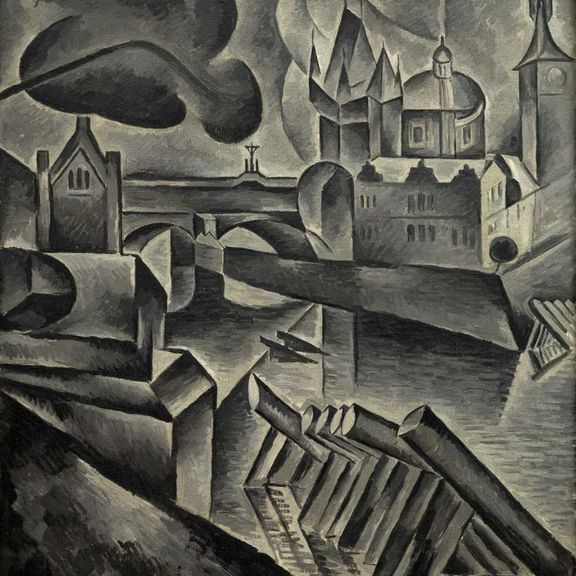
oil on canvas
circa 1910
lower right
60 × 82 cm
framed
This subject-matter is quite unusual for Václav Radimský as he was primarily a passionate landscape painter who was interested in nature in countless variations, depicting the same section of nature in different times of the day and weather conditions. Although we can find some examples in his work, e.g. the paintings Children in the Cornflower Field (1890), the famous Pig Slaughter, Gamekeeper (1897), and Path in Giverny (1894) in which he captured Claude Monet himself, these are rather exceptions, among which the presented artwork occupies an honourable and unique place. The everyday village scene is depicted here, where a shepherd returns home at dusk, as indicated by the light in the window of a village building, from a pasture of sheep. The scene is imbued with a certain melancholy and especially the tenderness with which the shepherd carries the smallest sheep, exhausted by all-day grazing. At the time this work was executed, Radimský and his brother Ladislav ran a food can factory, and therefore he travelled a lot – on trips to Hamburg or London, however, he did not stop painting. The compositions inspired by these trips have with the presented painting common elements consisting mainly in the chosen colour range and even the brushwork. Radimský also owned a mill in La Bergamotte near Goulet, where his brother’s family from Bohemia was visiting him. Moreover, this artwork dates back to his peak period of artistic strength and recognition, as evidenced by Guillaume Apollinaire’s positive, albeit partially critical, commentary on the Radimský’s exhibition at Bernheim’s in 1910: “…And if they do not have the unique silvery and softness of Corot, of whom Radimský thought, they have at least today a rare purity and honesty.” The painting was published in the artist’s latest monograph (N. Blažíčková-Horová: Václav Radimský, 1867–1946, Řevnice, 2011, cat. No. 221, p. 245). As evidenced by the stamp, it was exhibited in 1914 in Poland. Based on the aforementioned contexts and facts, this painting is considered a unique opportunity for collectors within the artist’s work. Assessed during consultations by prof. J. Zemina and Mgr. M. Dospěl, Ph.D. The expertise by Mgr. P. Kubík is attached.







